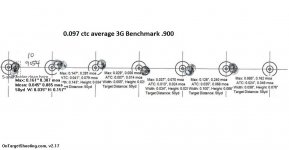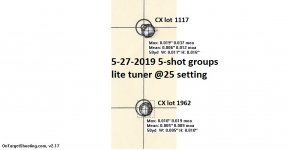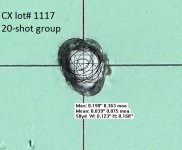ES is not a reliable indicator of ammo quality. It can't guarantee results. It may not be helpful to predict results.
After tracking MV vs POI for hundreds of ten-shot groups at 100 yards, it's clear that the relationship between the two is not consistent. The inconsistent relationship happens frequently. It is no longer a surprise. It's expected.
How frequently it occurs depends on lot quality. I've tested six different lots of M+ as well as three of CX. None were immune from the MV vs POI inconsistency problem. Some boxes from every lot were better than others, but no box was immune.
I'm going to show some examples. These illustrate the problem and are not unique. The last example was shot only yesterday.
Below is one example of many that could be given. Nine shots were close together with an MV spread from 1030 to 1069 fps, an ES of 39 fps. The lone "flyer" had an MV of 1040 fps.
_600_cropped_title_ES_mvpoi_0.jpg?width=590&height=370&fit=bounds)
Below, an example with less consistent ammo, SK RM, shows how a ten-shot ES typically affects results with three of the four groups. The group on the top right is very unusual and defies expectations based on ES alone.
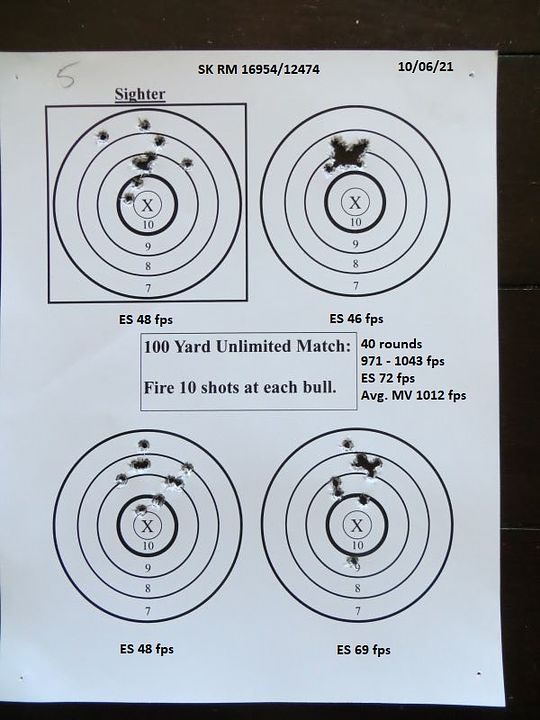
Below a more recent example. It shows that rounds don't strike consistently in terms of MV vs POI. In fact, sometimes slower rounds have a higher POI than faster ones and faster rounds a lower POI than slower ones.
_600_title_ES_1.1.2.3.4.jpg?width=960&height=720&fit=bounds)

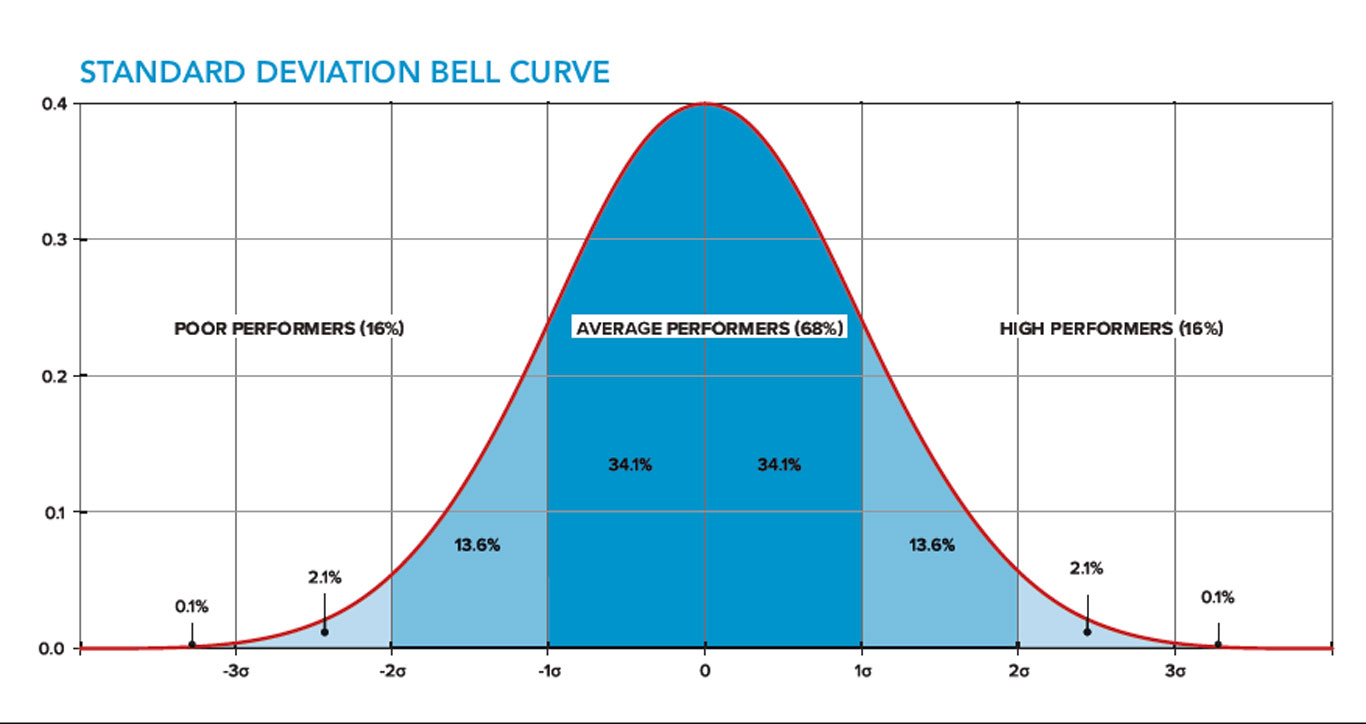

_600_cropped_title_ES_mvpoi_0.jpg?width=590&height=370&fit=bounds)

_600_title_ES_1.1.2.3.4.jpg?width=960&height=720&fit=bounds)

